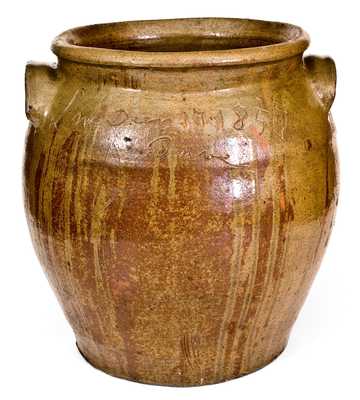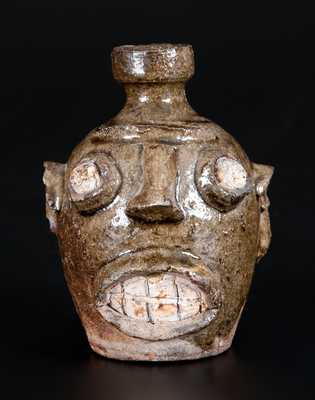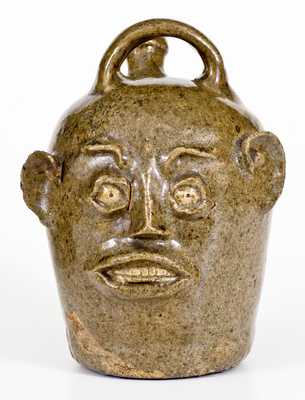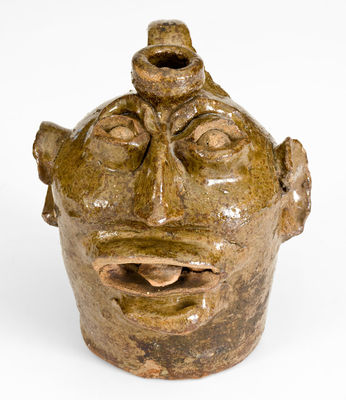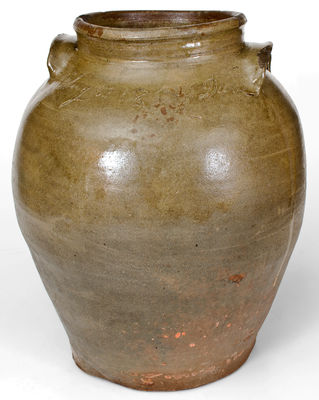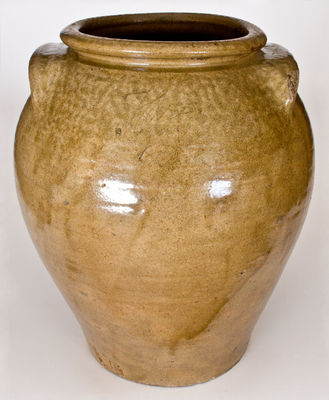Very Rare and Important Alkaline-Glazed Stoneware Harvest Face Jug, Edgefield District, SC origin, circa 1860-1870, wheel-thrown form with applied trumpet-form spout and arched handle, the surface featuring a hand-modeled and applied human face. Features include raised eyelids with kaolin eyes, a nose with carved nostrils, large well-formed ears with tragi and lobes, and an open mouth baring deeply-incised kaolin teeth. Surface covered in a streaky, light-green alkaline glaze with iron flecking throughout. Potted in an impressive large size with appealing harvest or monkey jug form, this Edgefield face vessel is possibly the finest example of the form to come to auction in years. The sculpting of the face includes lightly-depressed areas to the base and midsection that mimic the jaw and cheek structure of a human face, and distinctive, almost-flattened kaolin eyes, which lack incised pupils. Oral history indicates face vessels of this style were made by enslaved potters of African descent, either African-American, or newly-captured Africans, who arrived in the Edgefield District of South Carolina in 1858, after voyage on the illegal slave ship, The Wanderer. The jug's form, and aspects of the face, including the shapes of its eyes, ears, and nose, link to a small body of work by an as-yet-unidentified school or maker. Most prominent in this group is a monkey jug incised "Joe Kirksey", illustrated on p. 81, fig. 3.10 of Cinda K. Baldwin's book, Great and Noble Jar, and currently in the collection of the High Museum of Art in Atlanta, GA. A second more-closely related example is illustrated on the back cover of Great and Noble Jar, and currently resides in the collection of the Museum of Fine Arts, Boston. With exceptional form, size, and condition, this face vessel ranks among the greatest works of American ceramic folk sculpture to come to auction in the past decade or more. Provenance: A fresh-to-the-market example, found by the consignor in Connecticut several years ago. Excellent, essentially as-made condition with a very minor base chip and a tiny nick to one ear. H 9 1/2".









